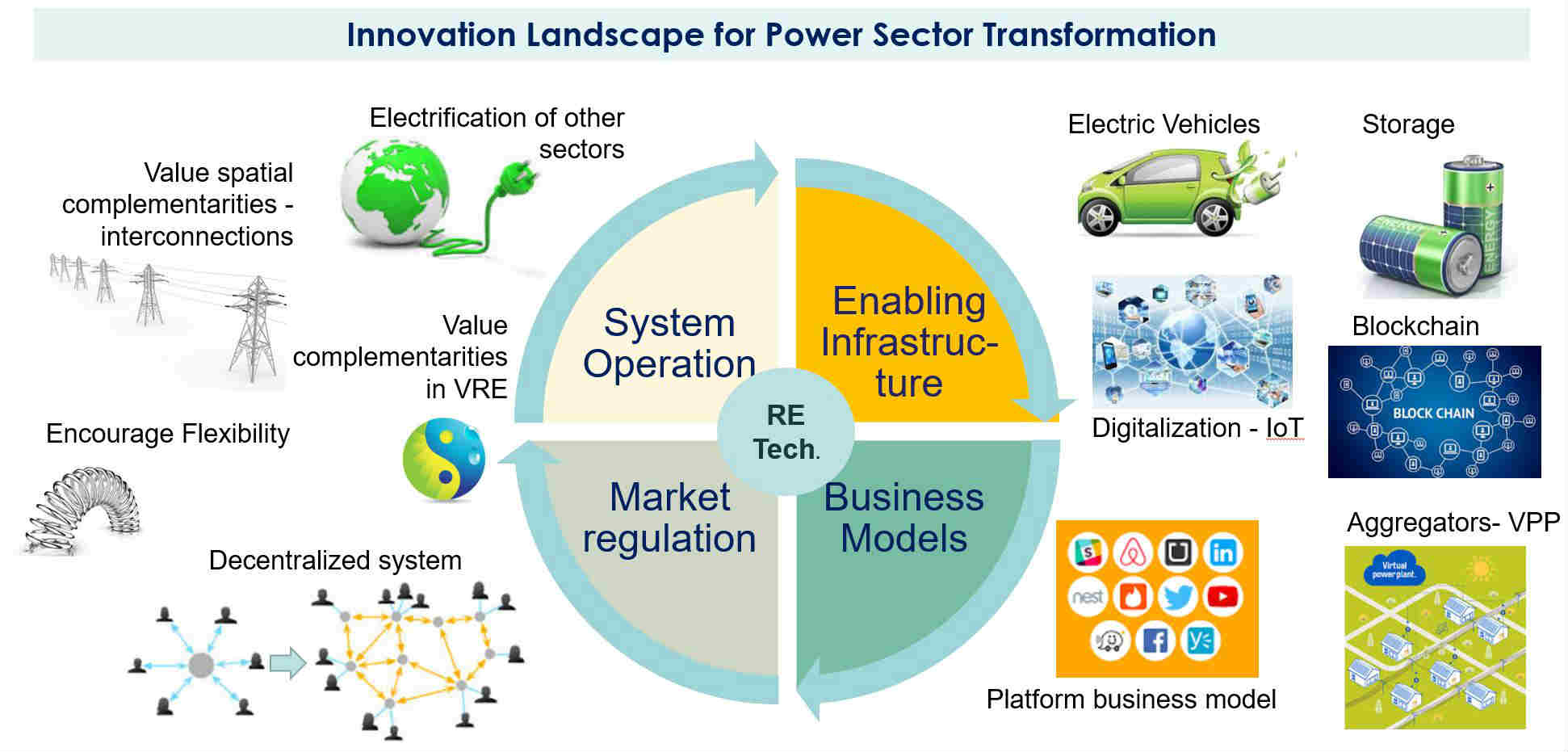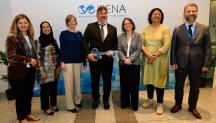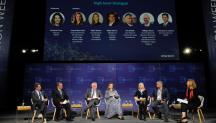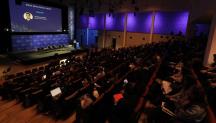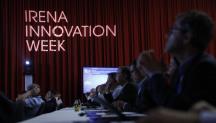

Building innovation networks to transform the energy landscape
Newsletter
IRENA reaches out to energy innovators at European Utility Week and the Global Science, Technology and Innovation Conference
The ‘three Ds’ of renewable energy — decarbonisation, decentralisation and digitalisation — are bringing new opportunities and transforming the energy sector. Innovations in technology, operations, policy, regulation, and business, are all interacting and re-enforcing each other’s contributions to the power system transformation towards low-carbon energy.
To better understand the reproducibility and scalability of the energy sector’s innovations and to accelerate the sector’s transformation, IRENA organised in October 2017 two sessions to discuss developments directly with innovators at the European Utility Week 2017 (EUW2017) in Amsterdam, and the Global Science, Technology and Innovation Conference (G-STIC) in Brussels.
“Everywhere we see the signs of change. Utilities are key facilitators for the energy transformation. To be successful, they must embrace transformation driven by a power system with high shares of renewables that is increasingly distributed, digitised and interconnected,” said IRENA Director-General Adnan Z. Amin at the opening of European Utility Week.
The trend is that consumers are turning into “prosumers” — becoming more informed and empowered, and taking an increasingly active role in the power sector. The two IRENA events created a space for stakeholders from utilities and consumers, to network and share their views about breakthrough innovations.
An innovation network
Through events like these and next June’s Innovation Week, IRENA aims to strengthen its role as a platform for networking and open dialogue between the stakeholders — including the private sector and policy makers — to foster innovation for the energy transformation.
“Innovations emerging all over the world, have the potential to lead the energy transition and decarbonise not only the power sector, but associated sectors like transportation, industry and end-use sectors,” says Dolf Gielen, the Director of the IRENA Innovation and Technology Centre.
“Close cooperation and collaboration between all stakeholders is needed, where the policymakers and regulators enable the emergence of new business models, where utilities and entrepreneurs come together and create new value streams for the consumers,” Gielen says.
In addition, IRENA’s forthcoming Innovation Landscape Report for the Power Sector Transformation aims to increase awareness of the emerging innovations among policymakers and guide them in what suits their country’s context and needs best.
Leading-edge innovations
In IRENA’s sessions during EU Utility Week and G-STIC, companies and projects presented their innovations that could support the energy transformation. Here are some of the highlights:
- Along with increasing distributed generation, distributed storage has recently gained momentum with behind-the-meter storage, allowing customers to store electricity generated by their rooftop solar panels for later use. Using batteries, heat pumps, PV-panels, recycled-heat air ventilation systems, plastic window frames with triple glazing, and isolation facades 30 centimetres thick, the Dutch project Stroomversnelling, is refurbishing homes and making them energy neutral.
- Electric vehicle (EV) innovation is bringing the transport and power sectors together, and potentially decarbonising both. In the power sector, EVs can be decentralised storage resources that can provide additional flexibility to support power system operation, but must be managed in a smart way to avoid power system disruption at peak load times.
- The Parker Project, developed by the Technical University of Denmark, is a Grid Integrated Vehicle (GIV) concept, and the first ‘vehicle to grid’ hub in the country. GIVs increase a grid’s flexibility allows for advanced grid services. VERBUND Solution GmbH, Austria's leading electricity company, is working on the first deployment of ultra-fast chargers for EVs in Austria and Germany.
- As the world shifts towards greater interconnectivity, the wider use of smart meters, sensors and internet of things applications, has created opportunities to provide new services to consumers, enabling them to participate in the electricity market by controlling consumption and reducing electricity bills. Using artificial intelligence and machine learning techniques, BeeBryte, a French energy intelligence company, is making buildings smarter and cleaner by modulating energy consumption with sensors that control heating, cooling and battery storage.
- Decentralisation and digitalisation has allowed for a variety of innovative business models to emerge. One of them is Virtual power plants, which aggregates distributed generation and demand response to sell electricity and ancillary services in the system. Paul Kreutzkamp from Next Kraftwerke, a virtual power plant operating in Germany and Belgium, believes that setting energy generation and demand should go hand in hand through price signals, spurring some utilities to consider new business models. The Dutch utility Eneco, is developing a network of home batteries into a virtual power plant to provide capacity and grid services to the Dutch grid (CrowdNett project).
- Platform business models based around peer-to-peer power trading is aiding the democratisation of electricity. Lumenaza, a new software platform in Germany, lets utilities buy and sell ‘regional electricity’ by connecting up small producers with consumers.
- Blockchain technology is coming to the energy sector and has the potential to change the paradigm by cutting-out the middlemen, and enabling peer-to-peer transactions based on smart contracts. SolarCoin, a blockchain-based digital asset, grants solar power producers 1Solar coin per MWh of energy produced.
To learn more about the events and to see the presentations, visit IRENA’s EU Utility Week and G-STIC event pages.
To learn more about innovation in the energy sector, read IRENA’s latest innovations paper and visit IRENA’s website.
